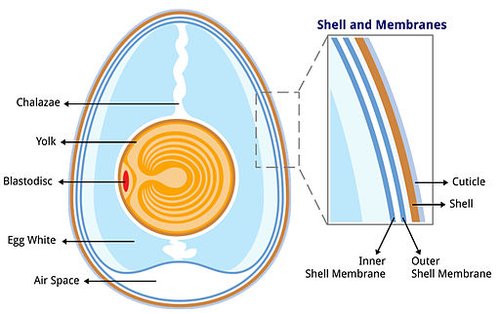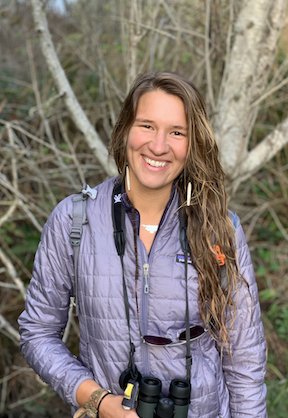Hanover Bald Eagle Blog # 2 - 2020
In partnership with Pennsylvania Game Commission and Comcast Business .
One egg weighs as much as a deck of cards.
Understandably, the failure of the second egg was a disappointment. After reviewing the following clip, raptor specialists have agreed on one thing: it’s hard to say what happened.
Eggs cannot form a shell unless they have a membrane holding the rest of the contents together, so the chance that the egg was laid without the appropriate membranes is unlikely. More likely, the egg was “addled,” or inviable.
There are several possibilities at the forefront of discussion. First, that Liberty may not have been in optimal body condition, and therefore could only produce one viable egg this year. Addled eggs are more common in raptors than in other birds, and are thought to be linked to the body condition of the female which is in turn related to food quality and availability. For a female to produce healthy eggs, she must be in a high nutritional state so as to produce enough calcium for the eggshells to form properly. Some years, the female just doesn’t have it in her.
Secondly, contaminants are known to cause egg-shell thinning and other adverse health effects in raptors. Bald eagles come into contact with several infamous contaminants, including lead, mercury, and organochlorine pesticides, which can all lead to reproductive challenges in raptors. Fish accumulate relatively high levels of contaminants through respiration in the water and through their food (oily fish species contain the highest concentrations of DDE, an especially harmful contaminant). This is not good news for bald eagles, since they are fish specialists. Birds also metabolize contaminants slower than other animal groups such as mammals, meaning that once a raptor has contaminants in their system, it takes longer for them to exit the body.
These speculations do not imply that Liberty is sick, but rather that environmental conditions could be related to the fate of the second egg.
On the bright side, the remaining youngster will have a higher chance of survival given that all of Liberty and Freedom’s energy and attention will be funneled into his/her survival, and sibling competition will not be an issue. Many raptor researchers have come across nests with undersized or malformed eggs, yet have seen the rest of the clutch fledge successfully. Therefore, the outlook for Liberty and Freedom’s remaining egg is positive. These circumstances also provide us as viewers with a unique comparative opportunity to observe the differences between a bald eagle nest with two hatchlings, and a nest with only one.
Let us now turn to a quote that eloquently summarizes the incredible feat of evolution that is the bird egg:
“How do you make a structure that keeps microbial aliens out, but at the same time allows the embryo inside to breathe; a shell that is strong enough to withstand the full weight of an incubating parent, but weak enough to allow the chick to eventually break free?” -Tim Birkhead, The Perfect Thing
How indeed?
With the help of several specialized structures within the egg:
The yolk is where the protein and fat are stored. Yolk size differs with species; generally, birds that hatch precocial, meaning well-developed and ready-to-go, depend on a larger yolk (40% of the egg). Altricial birds on the other hand are born helpless and dependent on their parents, which correlates to a smaller yolk (25% of the egg). In other words, chicks requiring the most parental care can afford to have access to less stored energy within the egg (the yolk) because they will have more time to develop outside of the egg.
Eggs also contain albumen, four membranes that provide water and protein to the embryo and serve as a protectant to shelter the developing hatchling from physical damage. However, developing embryos require oxygen, as well as a way to dispel carbon dioxide and wastewater, which means the eggshell must permit gas exchange. Incredibly, egg shells are porous enough for this process to occur.
Another important part of the egg is the chalazae, which essentially holds the yolk in the center of the egg. These are two stringy structures attached to the shell on either side of the yolk.

Source: Wikimedia Commons
Prior to the evolution of hard-shelled eggs with internal membranes, egg-laying animals had no choice but to live near water, where moist environmental conditions allowed their embryos to flourish without drying out. In this sense, bird eggs were an inventive step in the process of reproductive evolution. Imagine if all the world’s egg-laying species were restrained to breeding near waterways!
Liberty and Freedom’s newest egg is an exemplary evolutionary achievement, reminding us simultaneously that life is fragile, and life is strong. We can rest assured that both parents will invest their energy into adequately caring for their remaining offspring, providing the youngster with the best chance at survival possible.
QUIZ YOURSELF!
Given the aforementioned definitions of altricial and precocial, do you think bald eagle eggs contain a large yolk, or a small yolk?
SOURCES
Birkhead, Tim (2017). The Most Perfect Thing. London, United Kingdom: Bloomsbury Publishing PLC.
Redig et al. (1993). Raptor Biomedicine. Minneapolis, MN: University of Minnesota Press.
Newton, Ian (2010). Population Ecology of Raptors. London, United Kingdom: Bloomsbury Publishing PLC. (Original work published 1979).
Thanks also to Dr. Trish Miller, Dr. Todd Katzner, Dr. Jean-Francois Therrien, Adam Duerr, Jon Kauffman, and Jason Beale for their insight into this week’s events at the Hanover nest.

Written by Zoey Greenberg
RETURN TO HANOVER BALD EAGLE BLOGS
WATCH THE HANOVER BALD EAGLE LIVE CAMS
For over 20 years, HDOnTap has provided live streaming solutions to resorts, amusement parks, wildlife refuges and more. In addition to maintaining a network of over 400 live webcams, HDOnTap specializes in design and installation of remote, off-grid and otherwise challenging live streaming solutions. Contact press@hdontap.com for all media needs, including images and recordings.